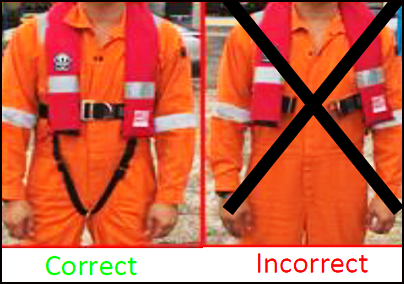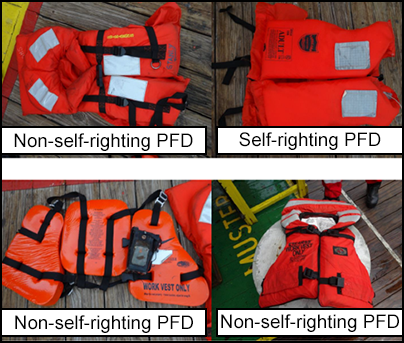-
What happened?
Many potential ‘man overboard’ incidents and near misses have been reported over recent years.
2 such incidents occurred within 6 months of each other, both resulting in loss of life.
In both incidents, the individuals who drowned were last seen by the quay side or on deck. Hours later, their bodies were discovered in the water.
Neither individual was wearing a personal flotation device (PFD).

-
Why did it happen?
Personal flotation devices (PFDs) were not worn or worn incorrectly (i.e. not tightened as per specification).
Insufficient availability of PFDs or the wrong type was given and used.
Risk assessments did not adequately address drowning risks.
Staff were not entirely clear on the risks of ‘man overboard’; hence, were not aware or ignored the hazards and control measures when working at or near the waterfront.
Inconsistency in where PFDs were considered to be worn
Colleagues or supervisors did not intervene when no PFD was used or worn incorrectly.

-
What did they learn?
Risk assessments should assess the need for PFDs and should include:
- type of PFD to be worn
- rules and procedures for PFD use
If needed, seek assistance from an authorised subject matter expert in maritime safety when undertaking the risk assessment.
Use PFDs with self-righting characteristics (unless the risk assessment determines that protection can be reached by wearing an approved PFD with reduced capability).
Workers should receive complete instructions on how to use PFDs. Regular users should receive refresher training at an appropriate interval to retain their skills.
Where insufficient or inappropriate PFDs are provided, replace these as a high priority, and put in place temporary risk mitigations.

-
Ask yourself or your crew
How can something like this happen here?
What and where are the ‘man overboard’ hazards at our site?
Why might someone NOT wear a PFD? Are there any issues or concerns we should be aware of at our location?
When and where do you need to wear a PFD? How do you know?
What type of PFDs do we have? How do we know whether they are the right type/adequate?
How do you wear a PFD? Are the instructions clear.
What should we do if we see colleagues not wearing a PFD?
What else can we do to prevent this incident happening here?

Add to homescreen
Content name
Select existing category:
Content name
New collection
Edit collection
What happened?
Many potential ‘man overboard’ incidents and near misses have been reported over recent years.
2 such incidents occurred within 6 months of each other, both resulting in loss of life.
In both incidents, the individuals who drowned were last seen by the quay side or on deck. Hours later, their bodies were discovered in the water.
Neither individual was wearing a personal flotation device (PFD).
Why did it happen?
Personal flotation devices (PFDs) were not worn or worn incorrectly (i.e. not tightened as per specification).
Insufficient availability of PFDs or the wrong type was given and used.
Risk assessments did not adequately address drowning risks.
Staff were not entirely clear on the risks of ‘man overboard’; hence, were not aware or ignored the hazards and control measures when working at or near the waterfront.
Inconsistency in where PFDs were considered to be worn
Colleagues or supervisors did not intervene when no PFD was used or worn incorrectly.

What did they learn?
Risk assessments should assess the need for PFDs and should include:
- type of PFD to be worn
- rules and procedures for PFD use
If needed, seek assistance from an authorised subject matter expert in maritime safety when undertaking the risk assessment.
Use PFDs with self-righting characteristics (unless the risk assessment determines that protection can be reached by wearing an approved PFD with reduced capability).
Workers should receive complete instructions on how to use PFDs. Regular users should receive refresher training at an appropriate interval to retain their skills.
Where insufficient or inappropriate PFDs are provided, replace these as a high priority, and put in place temporary risk mitigations.

Ask yourself or your crew
How can something like this happen here?
What and where are the ‘man overboard’ hazards at our site?
Why might someone NOT wear a PFD? Are there any issues or concerns we should be aware of at our location?
When and where do you need to wear a PFD? How do you know?
What type of PFDs do we have? How do we know whether they are the right type/adequate?
How do you wear a PFD? Are the instructions clear.
What should we do if we see colleagues not wearing a PFD?
What else can we do to prevent this incident happening here?
In two separate incidents, workers fell overboard and drowned. Their bodies were found hours later in the water. Neither was wearing a personal flotation device (PFD).












